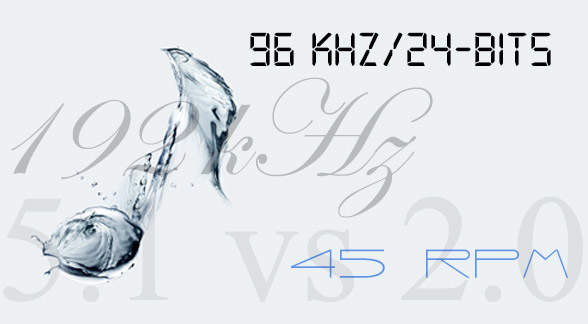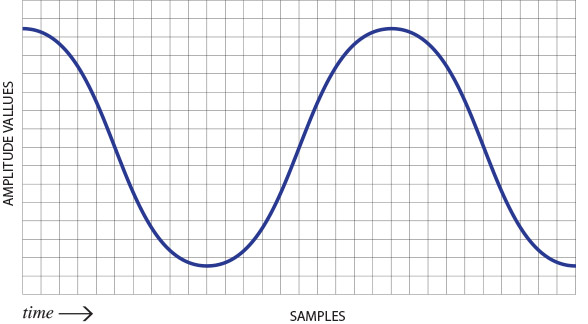HD-Audio By The Numbers: Part I Sample Rate
Specifications have always been a part of the audio hobby. I can remember looking at the THD (total harmonic distortion) or amplifier wattage numbers decades ago. These days specifications are also important…and equally misunderstood. Even if a particular listening experience or audio delivery format sounds great, knowing the raw potential of that recording is a factor in judging whether a track is really HD. Let’s begin with a discussion of sample rates.
PCM or Pulse Code Modulation is the world’s most common uncompressed encoding scheme. Yes, it’s true that there are more MP3 or AAC files downloaded, but they are lossy codecs and are not capable of HD delivery. PCM converts an incoming analog audio signal to a series of discrete sample values. The number of samples taken per second is called the sample rate. Typical sample rates are 44.1, 48, 88.2, 96, 176.4 and 192 kHz. There are even some systems in use studios today that use 384 kHz!
DSD, the encoding scheme developed by Sony and Phillips for use in the SACD format, uses a completely different encoding method but uses a sampling rate 64 or 128 times that of a standard compact disc. The DSD standard rate of 2.8224 MHz might seem a huge advance over PCM but it is not. Relying solely on the numbers for determining a format’s sound quality is as flawed today as it was back when I was searching for the equipment with the lowest THD specs.
The sample rate in a PCM digital is one of two critical specifications associated with the format. The other is the word length or the number of bits contained in each word. We’ll discuss word lengths in another post.
When I teach my advanced audio students about PCM encoding I draw a grid on the white board. I call it the “battleship” grid after the game of the same name. The vertical lines represent the samples and the horizontal lines are the amplitude values. I then draw a smooth sine wave over the grid.
The important thing about the sample rate is that it determines the highest frequency that can be captured or digitized. There is a famous theorem by a man named Nyquist that provides the relationship between the sample rate and the max frequency. Simply dividing the sample rate in half gives the result. So a compact disc with its 44.1 sample rate is capable of capturing a 22.050 kHz tone or harmonic…and according to Nyquist it can do it without distortion. Essentially it takes two sample at the highest frequency to describe the waveform.


